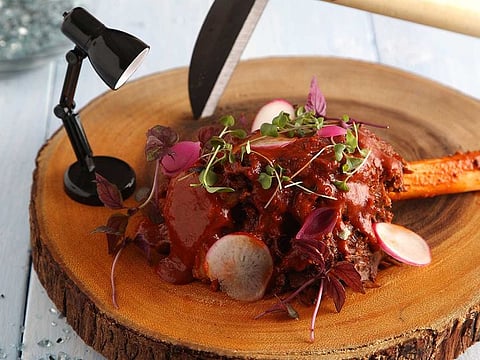6 slow-cooked food guides to try this weekend
Around the world with these dishes that are almost meditative in experience

Also In This Package
It’s the long weekend and you finally have more time on hand to cook the dishes which you might otherwise be too rushed for time to try.
Whip up a little patience, time, along with pantry staples and other readily available ingredients and get started with these step-by-step guides from Gulf News Food to making some classic global dishes.
1. Serbian Burek
The first form of Burek was called the Burga. Nomadic Turkish travellers of Central Asia wanted to carry fluffy breads during their journeys that could last for days. So they came with an idea to layer breads and deep-fry them with filling.
Its origin can be traced back to the Serbian town of Nis, where a famous Turkish Baker named Mehmed Oglu prepared it for the first time. This filled multi layered pastry, eventually gained popularity in Kosova, North Macedonia and the Federal People's Republic of Yugoslavia. Here is the recipe
2. Gujarati undhiyu
A traditional recipe from the Western Indian state – Gujarat, Undhiyo translates to upside-down. This is a cooking method used in rural Gujarat to prepare this winter dish, traditionally cooked in an earthen pot.
Using a bounty of seasonal vegetables like desi papdi or flat green beans, rataalu or purple yams, sweet potatos, potatoes and juicy brinjals, these are diced, spiced and slow-cooked. Typically this dish is served with a green chutney or coriander chutney and kotha or wood apple chutney.
This is a festive dish prepared during Uttarayan or Makar Sankranti which marks the harvest season. Watch the guide and learn how to make this Gujarati classic dish.
3. Raan or Sikandari Raan
Here is a legendary recipe from 1958, traditionally prepared with the hind leg of goat’s meat. Food historians believe that this dish was first prepared after Alexander the great (King of Macedonia) defeated the Indian king Porus in a battle. Alexander asked how he would like to be treated in captivity to which Porus replied ‘like a king’.
Alexander released the king and called for a feast in which this barbequed dish was prepared to mark this beginning of a friendship. Hence, it is also called Sikandari raan, as a nod to Alexander.
Try out this legendary recipe here
4. Slow cooked beef bone broth
Our ancestors drank bone broth to strengthen the kidneys and support the digestive system. Bone broths date back to thousands of years in the Greek and Asian cultures. They have again gained popularity across cultures due to their health benefits.
Bone broths require time to cook because animal bones are simmered over a period of time to extract the nutrients. It can take up to three to four hours or even 48 hours to make a bone broths. Here is a recipe for ten people that takes about 36 hours to cook.
5. Butter chicken
An accidental discovery, butter chicken is the quintessential representation of a dish that India and the world truly loves. According to food historians, the founders of a famous food Indian restaurant – Moti Mahal accidently mixed leftover tandoori chicken in a rich tomato gravy made with butter and cream.
It is the perfect mix of taste, skilfully balanced. Butter chicken is tangy with a velvety texture balanced with the bitter taste of fenugreek and garlic. It pairs well with rumali roti or even steamed white rice.
Here is the recipe.
6. Palestinian maqlubeh (upside-down rice and chicken)
Maqluba or maqlooba is a traditional rice-based and meat dish popular in Palestine, Syria and the entire of Levant. The word is derived from its serving technique where the pot is flipped ‘upside-down’.
One of the oldest recipes can be found in the Kitab al-Tabikh (book of cookery) which is a 1000-year-old Arabic cook book written by written by Ibn Sayyar al-Warraq.
This recipe uses a mix of vegetables - eggplants, cauliflower florets, potatoes, capsicum, meat alongwith with a mix of long-grain rice and Egyptian short-grain rice, simmered in seven spices.
Here is a step-by-step guide to making this dish
Tell us about your favourite dishes and share your recipes at food@gulfnews.com
Sign up for the Daily Briefing
Get the latest news and updates straight to your inbox








